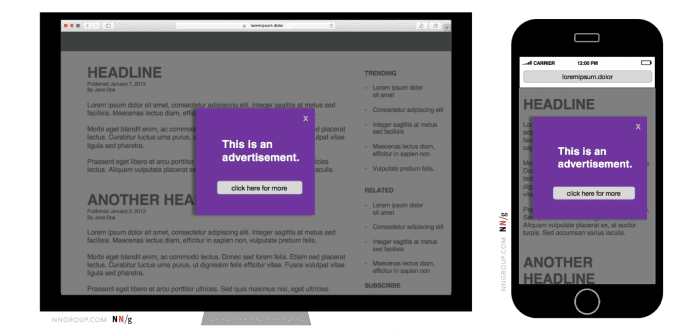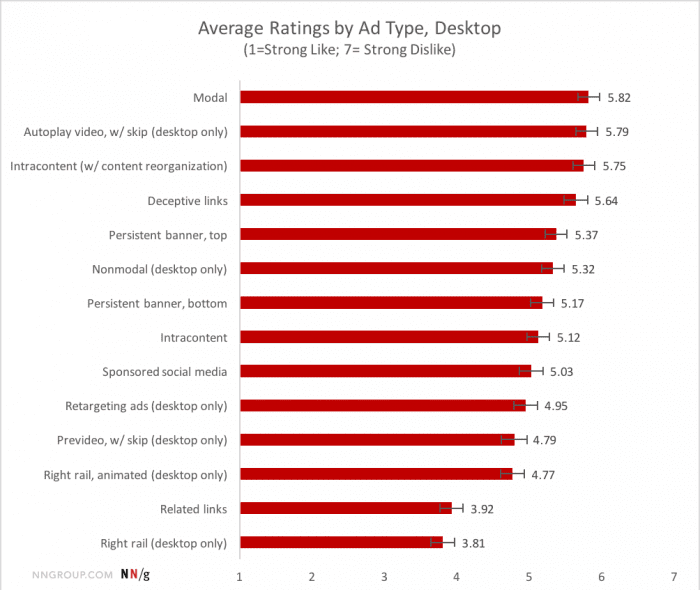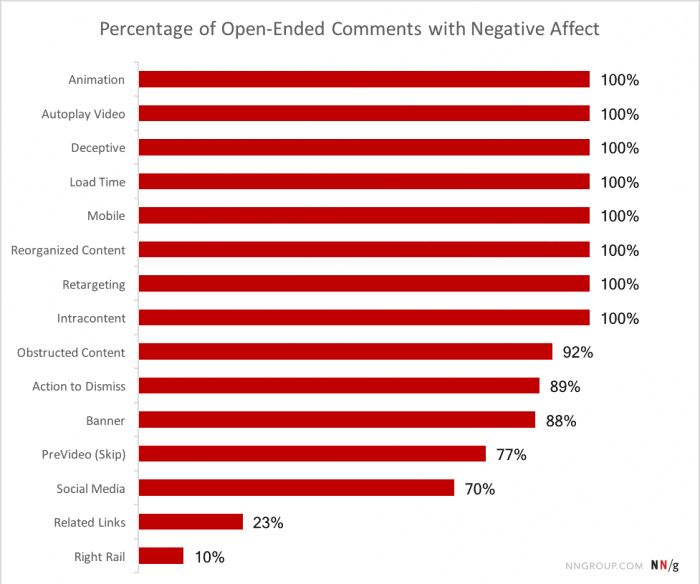Chart of the Day: New research on web users' perception of ad types and formats
The Nielsen Norman Group has been helping make the web a better place through their research and advice on usability and customer experience for a long time. In fact, it's since 1998, about as long as I've been involved in advising on digital marketing. While their research usually has a solid methodology and sample, I've always felt, it often takes a 'pure usability' perspective that isn't necessarily useful to businesses and marketers who are promoting their service. But perhaps marketers need that counterpoint.
This research is a case in point. In this survey, participants were shown 23 wireframes (not actual ads) corresponding to different types of advertisements and rated how much they disliked them on a scale of 1 to 7. Here's an example:

So, which were the most hated? Well, it's no surprise what is top of the list, it's the 'good old' modal, pop-up, lightbox, call it what you will.
What are the implications for marketers? Should we stop using modals? I think not, since these are important to the revenue and profitability of online businesses in many sectors from retail and publishing to travel. As this article by Kath Pay giving 6 tips to grow your email subscriber list with pop-ups shows, these can give double-digit increases to subscription rates compared to a control. In our case a lightbox gives us 40% increase in leads. I should note that on mobile (which this study also shows) you need to be careful with Google's action to penalise pop-ups which could impact SEO.

Looking at the other 'most hated' it's no surprise that autoplay video and interstitials are annoying and I think marketers should hesitate before using these - I'm not sure whether evidence shows these are more effective - as is the case with modals.
I also notice that 'sponsored social media' and retargeting ads aren't so popular. No surprise there either, but are we going to stop using them? Hell no! They are effective formats because they are interruptive and contextual, based on the relevance of people's profile, action or interactions with other sites. As our research summary on ad clickthrough rates shows, it's difficult enough making an impact with ads given web users' natural 'banner blindness'.
The study also looked at other features. Ah OK, so we shouldn't use animations... It's not going to happen Jakob.










